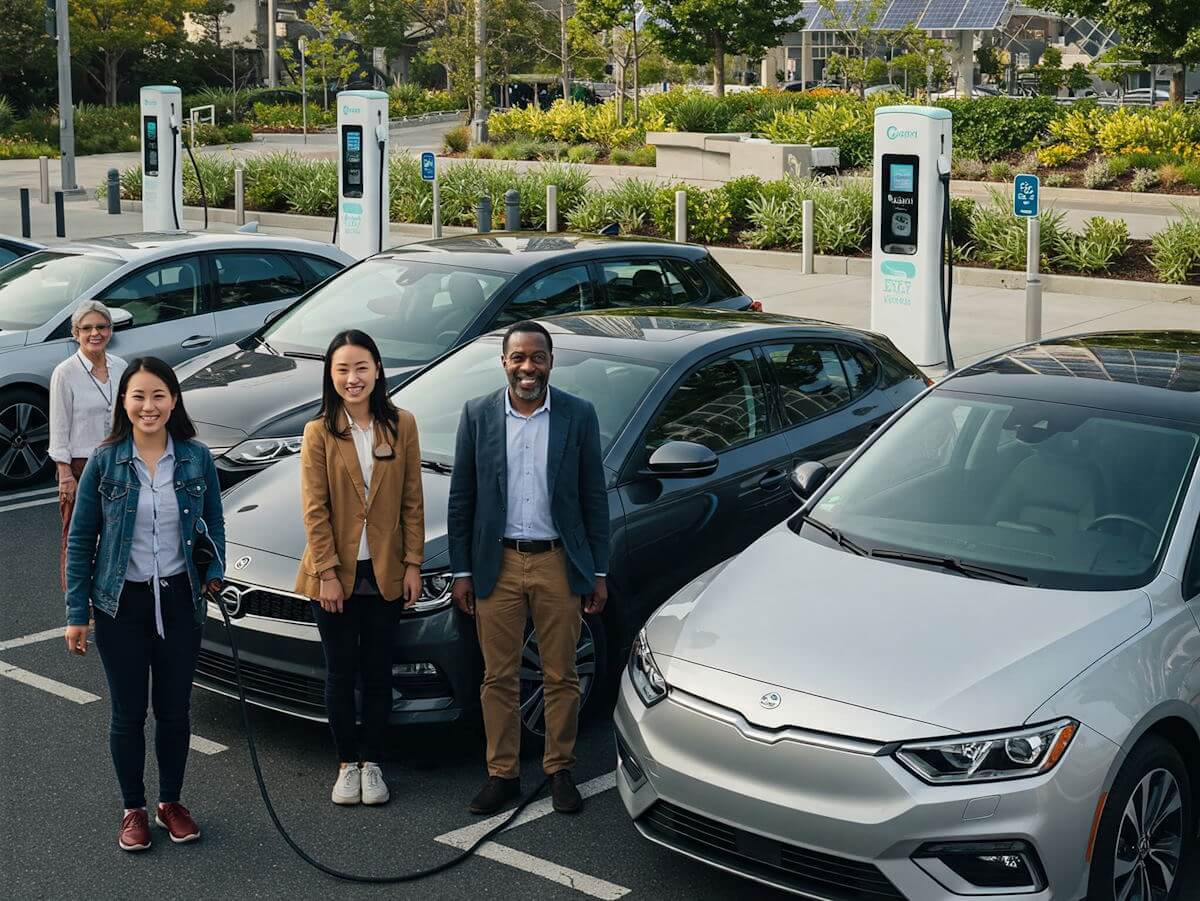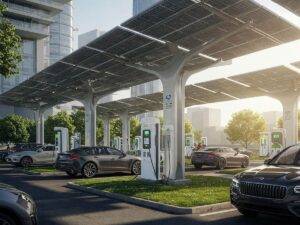Electric vehicles (EVs) have gained significant traction in recent years, driven by increasing consumer awareness of environmental issues and the changing landscape of automotive technology. The transition towards cleaner and more sustainable transportation has led to growing interest in electric vehicle alternatives. Recognizing the impact of this transition, governments across the globe have implemented various incentives to encourage the adoption of EVs among consumers.
EV incentives are designed to make the purchase and ownership of electric vehicles more accessible and appealing. These incentives typically come in the form of financial benefits such as tax credits, rebates, grants, and subsidies. By reducing the overall cost of owning an electric vehicle, these incentives aim to alleviate the initial financial hurdles that potential buyers may face. Furthermore, they play a crucial role in promoting a shift away from traditional gasoline-powered vehicles towards greener alternatives, which can significantly reduce greenhouse gas emissions and air pollution.
Various types of EV incentives are available depending on the region and policies enacted by local, state, or federal authorities. Some common forms include direct purchase rebates, income tax credits, reduced registration fees, and exemptions from certain taxes. Additionally, incentive programs may also extend to charging infrastructure, making it easier for consumers to charge their electric vehicles at home or in public spaces. Engaging with these government-sponsored programs not only helps consumers save money but also underscores their commitment to sustainable transportation.
The importance of EV incentives cannot be overstated. They not only support consumers in overcoming the initial costs associated with electric vehicles but also stimulate the market for EVs, paving the way for advancements in technology and greater investment in sustainable infrastructure. As government policies evolve, understanding the available incentives can empower consumers to make informed decisions about transitioning to electric vehicles.
Types of Government Incentives Available
Government incentives for electric vehicle (EV) buyers are designed to promote the adoption of cleaner transportation technologies. These incentives can be classified into three primary categories: federal tax credits, state rebates, and local incentives. Each category serves to encourage consumers to consider purchasing EVs by providing various financial benefits that can significantly offset the initial costs of these vehicles.
One of the most well-known incentives is the federal tax credit. Under current legislation, qualifying buyers can receive a credit of up to $7,500 on their federal tax return. This credit is determined by the capacity of the EV’s battery, and it applies to new electric cars purchased for personal use. To be eligible, the vehicle must meet specific criteria, including its manufacturer’s production limits, which can affect the availability of the credit over time.
State rebates are another vital component of the incentives landscape. Many states offer direct cash rebates that can range from a few hundred to several thousand dollars. These rebates typically vary based on the state’s commitment to environmental initiatives and can sometimes apply to both new and used EV purchases. Prospective buyers should check their state’s energy or transportation department website for detailed information regarding the amount of the rebate, eligibility requirements, and application procedures.
Local incentives may be offered by municipalities or utility providers and can include grants, additional rebates, or discounts on charging station installations. These incentives aim to further entice consumers with local benefits and bolster the appeal of electric vehicles. Local programs might also address unique regional concerns, such as air quality improvements or expanding charging infrastructure, ultimately fostering greater adoption of EV technology.
Federal EV Tax Credits Explained
The United States federal government provides substantial tax credits to promote the purchase of electric vehicles (EVs). These incentives are designed to lower the initial cost of EVs, making them more attractive options for consumers and ultimately accelerating the transition toward sustainable transportation. The federal EV tax credit can significantly reduce the expense associated with purchasing a new electric vehicle, enabling buyers to make a more informed and financially viable decision.
As of the latest regulations, eligible consumers can receive a tax credit of up to $7,500 for qualifying electric vehicles. The exact amount of the credit depends on various factors, including the battery capacity of the EV. Vehicles with larger battery sizes may qualify for the maximum credit, while those with smaller batteries may have reduced credits. Moreover, this incentive is not a rebate; rather, it operates as a non-refundable tax credit, which means it can only be applied against the buyer’s tax liability, potentially resulting in a financial benefit during tax season.
Qualifications to be eligible for the federal EV tax credit include the vehicle being new and acquired specifically for personal use. It is important to note that certain manufacturers may have a phase-out threshold for the tax credit. Once a manufacturer sells a specific number of qualified electric vehicles (typically 200,000 units), the federal tax incentive begins to reduce and can eventually phase out completely. Accordingly, interested buyers should verify the eligibility of the model they wish to purchase, as well as its manufacturer’s status regarding the EV tax credit.
In conclusion, understanding federal tax credits for electric vehicles is crucial for potential EV buyers. By effectively leveraging these incentives, consumers can significantly reduce the cost of transitioning to a more sustainable transportation option.
State and Local Incentives: What to Expect
As the adoption of electric vehicles (EVs) continues to gain traction across the United States, various state and local governments are introducing a range of incentives to encourage this transition. These initiatives go beyond federal tax credits, offering buyers a variety of financial benefits. The specifics of these incentives can differ significantly from one state to another, reflecting local priorities and environmental goals.
Many states offer direct rebate programs, which allow consumers to receive cash back upon the purchase of an EV. For instance, California has established the Clean Vehicle Rebate Project, providing rebates that can reduce the overall cost of purchasing an eligible electric car. Similarly, New York has its own rebate system aimed at promoting the use of EVs within the state. It is advisable for potential buyers to research whether such programs exist in their state and what the eligibility criteria are.
Another popular incentive is the exemption from state sales taxes on electric vehicles, which can result in substantial savings. States like Florida and Texas have implemented tax exemptions specifically designed to make EVs more accessible. In addition to tax relief measures, many local governments are stepping into the fray with unique offers, including grants to support the installation of home charging stations. For example, some municipalities provide funds to homeowners who invest in charging infrastructure, further alleviating the concerns about charging capabilities.
Moreover, incentives are frequently subject to change, with some states revising their programs annually or in response to budgetary constraints. Consequently, it is crucial for EV buyers to stay informed about the latest developments regarding state and local incentives. By taking advantage of these programs, consumers can ultimately reduce the overall cost of owning an electric vehicle while contributing to a more sustainable future.
How to Apply for EV Incentives
Applying for electric vehicle (EV) incentives can be a straightforward process if approached systematically. To start, potential buyers should research the specific incentives available in their state or country, as programs vary widely in terms of eligibility and benefits. Most regions offer a mixture of federal, state, and local incentives, which can include tax credits, rebates, or grants for purchasing an EV.
Once you have identified the relevant incentives, the next step is to gather all necessary documentation. This often includes proof of purchase, such as a bill of sale or invoice, the vehicle’s identification number (VIN), and any additional documentation related to your application. For certain incentives, you may also need to provide proof of residency or income tax filings. It’s wise to keep these documents organized and readily accessible to streamline the process.
When filling out the application forms, pay close attention to detail to avoid common errors that could delay your approval. Ensure that all information matches the provided documentation accurately. Many applications can be completed online, which usually expedites the processing time. Be aware of deadlines, as some incentives may have limited timeframes for applications; it’s advisable to apply as soon as possible after your purchase.
After submission, applicants should follow up on the status of their applications, as processing times can vary significantly depending on the incentive program. Keeping a record of communication with the relevant agencies can aid in resolving any potential issues. Additionally, some programs may require periodic updates or further documentation, so be prepared to provide further information if requested. By following these guidelines, you can increase your chances of successfully obtaining government incentives for your electric vehicle investment.
Impact of EV Incentives on Buyer Decisions
Government incentives for electric vehicle (EV) buyers play a crucial role in shaping consumer purchasing decisions. Various studies indicate that financial incentives, such as tax credits, rebates, and grants, significantly influence potential buyers’ interest in switching from traditional gasoline-powered vehicles to electric alternatives. According to a report by the International Council on Clean Transportation, countries offering substantial incentives have seen marked increases in EV adoption rates. For instance, in markets like Norway and the Netherlands, where government subsidies are robust, the market share of electric vehicles has soared beyond 50% in recent years.
Market research suggests that the initial production cost of electric vehicles remains a barrier for many consumers. However, government incentives effectively mitigate this issue by lowering the overall cost of ownership. A report from the European Alternative Fuels Observatory reveals that when incentives are factored in, the price gap between EVs and conventional vehicles diminishes, making electric vehicles more appealing. Moreover, the additional savings on fuel and maintenance further sweeten the deal for prospective buyers.
Consumer testimonials also reflect the positive impact of financial incentives. Many buyers cite the federal electric vehicle tax credit as a decisive factor in their purchasing decisions, emphasizing how such incentives made them more willing to invest in an EV. These incentives not only lower the purchase price but also enhance the perceived value of EVs as eco-friendly transportation options. Cities are increasingly adopting their own local incentives to promote electric vehicle use, extending the benefits to buyers and amplifying the effect of federal measures.
In summary, government incentives significantly influence consumer behavior regarding electric vehicle purchases. By easing the financial burden, these incentives have fostered a more favorable outlook towards EVs, contributing to their growing popularity in the automotive market.
Future of Government Incentives for EVs
The landscape surrounding government incentives for electric vehicles (EVs) is poised for significant transformation in the coming years. With increasing awareness of climate change and the urgent necessity for reduced carbon emissions, governments globally are reassessing their funding priorities to encourage electric vehicle adoption. This shift not only aims to promote sustainable transportation but also to support the broader goal of reducing reliance on fossil fuels.
Future legislative changes are expected to play a critical role in shaping the framework for EV incentives. Many governments are considering extending tax credits, rebates, and grants specifically tailored for EV purchases. These potential updates may lead to a more comprehensive approach that incorporates not only financial incentives for buyers but also investment in charging infrastructure. As the demand for electric vehicles increases, it is essential for governments to ensure that consumers have access to a reliable network of charging stations, which can further facilitate the transition towards electric transportation.
Moreover, governments are likely to explore innovative funding models aimed at supporting both consumers and manufacturers of electric vehicles. This could include partnerships between public and private sectors to bolster investment in green technology and infrastructure. As part of their climate change commitments, governments may leverage public funds and engage in collaborations to tackle the barriers inhibiting EV adoption, such as high upfront costs and limited charging options.
In conclusion, the future of government incentives for electric vehicles appears dynamic and responsive to both economic and environmental imperatives. As nations strive to meet their climate objectives, we can expect an evolution of incentives that balance immediate consumer benefits with long-term sustainability goals. This ongoing commitment to enhancing the electric vehicle market is vital to combating climate change and promoting a cleaner tomorrow.
Challenges and Limitations of Current Incentives
While government incentives for electric vehicle (EV) buyers are designed to promote the adoption of cleaner technology, several challenges and limitations hinder their effectiveness. One of the key issues is the complexity surrounding the available incentives. Consumers often face a convoluted landscape of federal, state, and local programs, each with varying eligibility requirements, rebate amounts, and application processes. This complexity can lead to confusion among potential buyers, resulting in missed opportunities and a slowdown in EV adoption.
Accessibility is another significant barrier that affects the reach of EV incentives. Many programs are often more beneficial to middle- and upper-income households, leaving lower-income buyers at a disadvantage. Financial constraints can prevent these individuals from affording the upfront costs associated with purchasing an electric vehicle, even with available subsidies. Consequently, the incentives may fail to create equitable access to clean transportation options, exacerbating existing inequalities in the automotive market.
Furthermore, the sustainability of current incentives poses a critical challenge. As the demand for EVs increases, governments may face budget constraints that limit their ability to maintain or expand these incentives over time. Additionally, reliance on temporary subsidies can create market instability, leading to fluctuations in consumer confidence. Such uncertainty may deter potential buyers from considering electric vehicles, thus undermining the long-term goals of reducing greenhouse gas emissions and transitioning to a more sustainable transportation system.
In summary, while government incentives play a crucial role in promoting electric vehicle adoption, their complexity, accessibility issues, and sustainability concerns need to be addressed to maximize their effectiveness. Stakeholders must work collaboratively to create a more equitable and straightforward incentive structure that encourages broader participation in the EV market.
Conclusion
As the shift towards electric vehicles (EVs) accelerates, understanding government incentives becomes increasingly important for potential buyers. Throughout this blog post, we have explored various forms of financial support available at both federal and state levels that can significantly reduce the overall cost of purchasing an EV. These incentives often include tax credits, rebates, and grants, making electric vehicles more accessible to a wider audience.
It is vital for consumers to be aware of the specific incentives offered in their region, as these programs can vary widely across different states. Furthermore, as the landscape of EV incentives evolves, staying informed can ensure that buyers capitalize on any changes or new programs that may emerge. By doing so, prospective EV owners can make more informed decisions and potentially save substantial amounts on their purchase.
Additionally, aside from direct financial benefits, it is essential to consider the long-term savings associated with owning an electric vehicle. Lower operating costs, reduced maintenance expenses, and access to carpool lanes are just a few advantages that can contribute to a compelling value proposition for EV ownership. Incorporating an understanding of both the immediate and long-term benefits of these government incentives will assist consumers in making an informed choice regarding their new vehicle.
As you contemplate the transition to an electric vehicle, I encourage you to actively research the incentives available in your locale. Engaging with local dealerships, government websites, or EV advocacy groups can provide further insight into the financial aids offered. By doing so, you can maximize your savings while contributing to a more sustainable future. The journey toward electric vehicle ownership can be more rewarding and affordable with the right knowledge and resources at your disposal.




